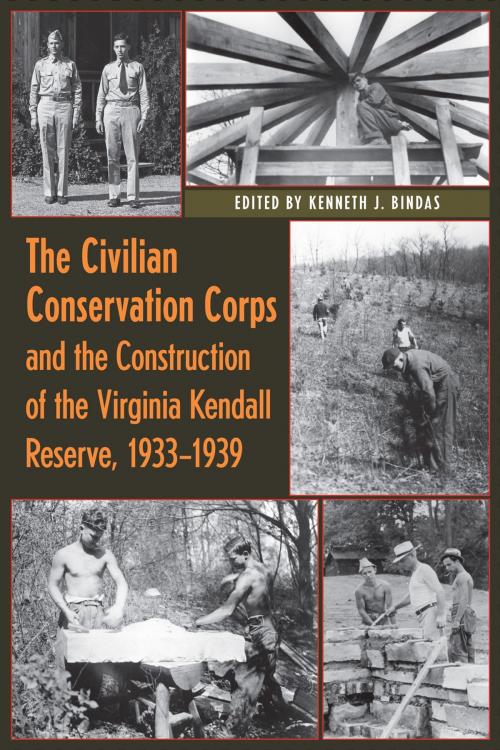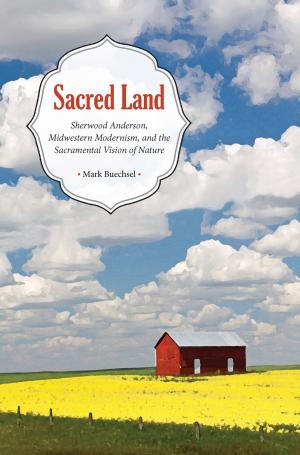The Civilian Conservation Corps and the Construction of the Virginia Kendall Reserve, 1933 - 1939
Nonfiction, Art & Architecture, Architecture, Landscape, History| Author: | ISBN: | 9781612776804 | |
| Publisher: | The Kent State University Press | Publication: | October 1, 2013 |
| Imprint: | The Kent State University Press | Language: | English |
| Author: | |
| ISBN: | 9781612776804 |
| Publisher: | The Kent State University Press |
| Publication: | October 1, 2013 |
| Imprint: | The Kent State University Press |
| Language: | English |
How the Civilian Conservation Corps transformed our understanding of nature
In the spring of 1933, the United States was in the midst of the worst economic calamity it had ever experienced. Newly inaugurated president Franklin D. Roosevelt asked Congress to approve funding allowing legions of out-of-work young men to find employment reclaiming and developing the nation’s natural spaces. The Civilian Conservation Corps became a reality in April 1933 and forever changed the way the American people viewed their parks, rivers, lakes, and other natural areas.
This book tells the story of the CCC’s construction of the Virginia Kendall Reserve, which today is part of the Cuyahoga Valley National Park, in Northeast Ohio. Four hundred and thirty acres of farmland came under the control of the Akron Metropolitan Park District and its director-secretary, Harold Wagner, who immediately applied to the federal government to establish a CCC camp there with the aim of creating a natural recreation landscape open to the public.
Author Kenneth Bindas and seven of his students from Kent State University drew upon a wide variety of government documents, oral histories, and other primary sources to place the construction of the Reserve within the larger context of modernism and the emerging 1930s movements whose goals were to protect and open up natural areas. As a case study, the construction of the Virginia Kendall Reserve provides an example of the design, manipulation, and construction used to create so many Civilian Conservation Corps environments.
The book is filled with historic photographs showing the process of construction, and contemporary photos by Marina Vladova visually detail the lush nature that families, hikers, runners, bikers, and naturalists enjoy today.
Published in cooperation with the National Park Service and Eastern National
How the Civilian Conservation Corps transformed our understanding of nature
In the spring of 1933, the United States was in the midst of the worst economic calamity it had ever experienced. Newly inaugurated president Franklin D. Roosevelt asked Congress to approve funding allowing legions of out-of-work young men to find employment reclaiming and developing the nation’s natural spaces. The Civilian Conservation Corps became a reality in April 1933 and forever changed the way the American people viewed their parks, rivers, lakes, and other natural areas.
This book tells the story of the CCC’s construction of the Virginia Kendall Reserve, which today is part of the Cuyahoga Valley National Park, in Northeast Ohio. Four hundred and thirty acres of farmland came under the control of the Akron Metropolitan Park District and its director-secretary, Harold Wagner, who immediately applied to the federal government to establish a CCC camp there with the aim of creating a natural recreation landscape open to the public.
Author Kenneth Bindas and seven of his students from Kent State University drew upon a wide variety of government documents, oral histories, and other primary sources to place the construction of the Reserve within the larger context of modernism and the emerging 1930s movements whose goals were to protect and open up natural areas. As a case study, the construction of the Virginia Kendall Reserve provides an example of the design, manipulation, and construction used to create so many Civilian Conservation Corps environments.
The book is filled with historic photographs showing the process of construction, and contemporary photos by Marina Vladova visually detail the lush nature that families, hikers, runners, bikers, and naturalists enjoy today.
Published in cooperation with the National Park Service and Eastern National















